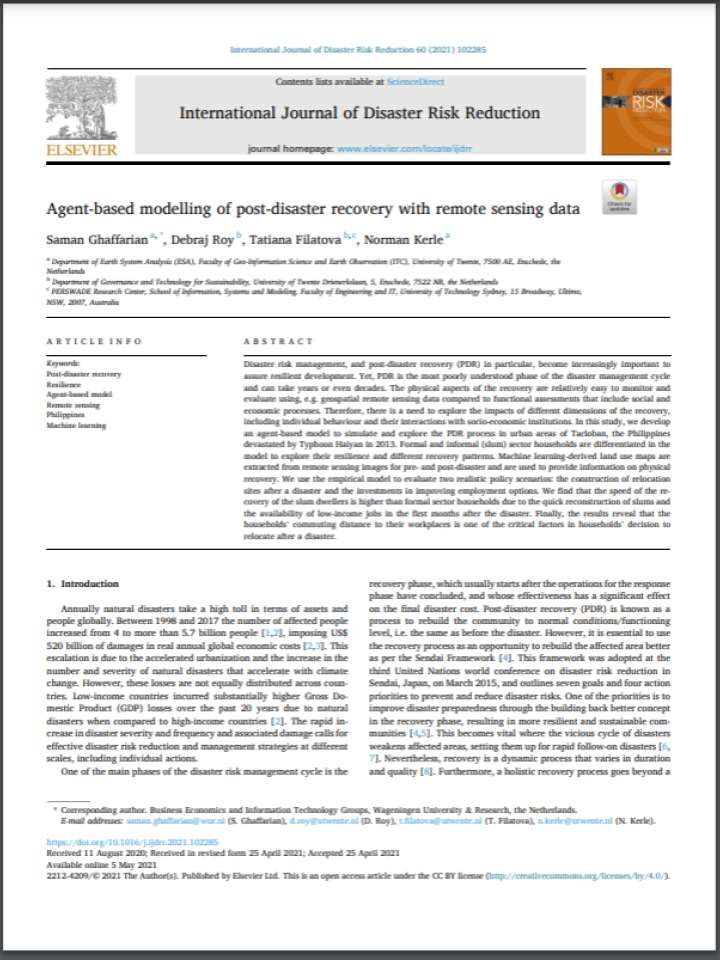Agent-based modelling of post-disaster recovery with remote sensing data
In this study, researchers developed an agent-based model to simulate and explore the post-disaster recovery (PDR) process in urban areas of Tacloban, the Philippines devastated by Typhoon Haiyan in 2013. Disaster risk management, and PDR in particular, become increasingly important to assure resilient development. Yet, PDR is the most poorly understood phase of the disaster management cycle and can take years or even decades. The physical aspects of the recovery are relatively easy to monitor and evaluate using, e.g. geospatial remote sensing data compared to functional assessments that include social and economic processes. Therefore, there is a need to explore the impacts of different dimensions of the recovery, including individual behaviour and their interactions with socio-economic institutions.
For this study, researchers differentiated formal and informal (slum) sector households in the model to explore their resilience and different recovery patterns. Researchers found that the speed of the recovery of the slum dwellers is higher than formal sector households due to the quick reconstruction of slums and the availability of low-income jobs in the first months after the disaster. Finally, the results reveal that the households' commuting distance to their workplaces is one of the critical factors in households’ decision to relocate after a disaster.
Explore further

